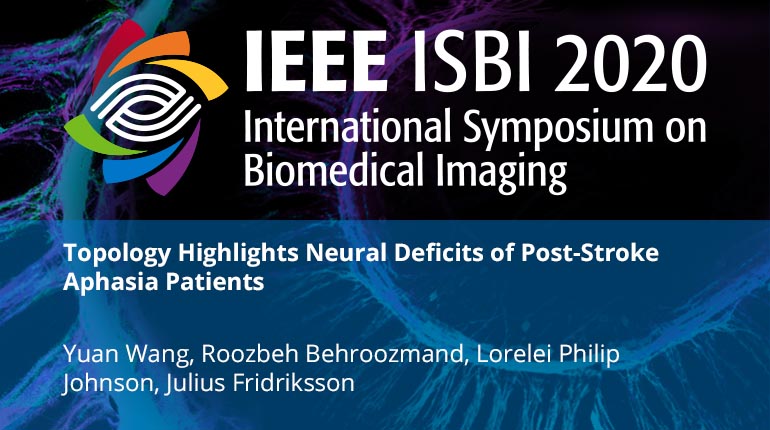
Already purchased this program?
Login to View
This video program is a part of the Premium package:
Topology Highlights Neural Deficits of Post-Stroke Aphasia Patients
- IEEE MemberUS $11.00
- Society MemberUS $0.00
- IEEE Student MemberUS $11.00
- Non-IEEE MemberUS $15.00
Topology Highlights Neural Deficits of Post-Stroke Aphasia Patients
Statistical inference of topological features decoded by persistent homology, a topological data analysis (TDA) algorithm, has been found to reveal patterns in electroencephalographic (EEG) signals that are not captured by standard temporal and spectral analysis. However, a potential challenge for applying topological inference to large-scale EEG data is the ambiguity of performing statistical inference and computational bottleneck. To address this problem, we advance a unified permutation-based inference framework for testing statistical difference in the topological feature persistence landscape (PL) of multi-trial EEG signals. In this study, we apply the framework to compare the PLs in EEG signals recorded in participants with aphasia vs. a matched control group during altered auditory feedback tasks.
Statistical inference of topological features decoded by persistent homology, a topological data analysis (TDA) algorithm, has been found to reveal patterns in electroencephalographic (EEG) signals that are not captured by standard temporal and spectral analysis. However, a potential challenge for applying topological inference to large-scale EEG data is the ambiguity of performing statistical inference and computational bottleneck. To address this problem, we advance a unified permutation-based inference framework for testing statistical difference in the topological feature persistence landscape (PL) of multi-trial EEG signals. In this study, we apply the framework to compare the PLs in EEG signals recorded in participants with aphasia vs. a matched control group during altered auditory feedback tasks.
 Cart
Cart Create Account
Create Account Sign In
Sign In





